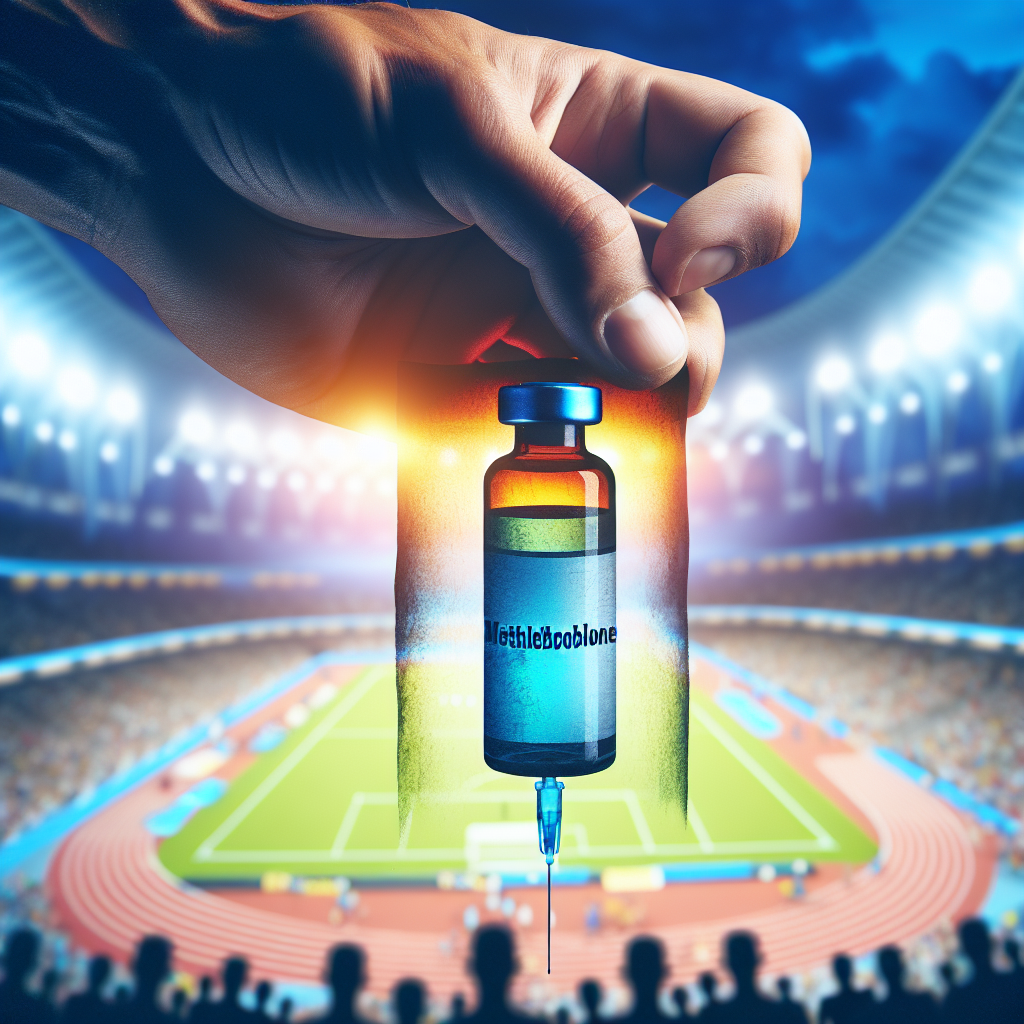-
Table of Contents
Methyltrenbolone: Doping Hidden in the World of Sports
The use of performance-enhancing drugs in sports has been a controversial topic for decades. Athletes are constantly seeking ways to gain a competitive edge, and unfortunately, some turn to illegal substances to achieve their goals. One such substance that has been gaining attention in the world of sports is methyltrenbolone, a potent and dangerous anabolic steroid. In this article, we will explore the use of methyltrenbolone in sports, its pharmacokinetics and pharmacodynamics, and the potential risks associated with its use.
The Rise of Methyltrenbolone in Sports
Methyltrenbolone, also known as metribolone, is a synthetic androgenic-anabolic steroid that was first developed in the 1960s. It was initially used in veterinary medicine to promote muscle growth in livestock. However, it soon caught the attention of bodybuilders and athletes due to its high anabolic potency and low androgenic effects.
Today, methyltrenbolone is classified as a Schedule III controlled substance in the United States, meaning it is illegal to possess or distribute without a prescription. Despite this, it has become increasingly popular among athletes, particularly in strength-based sports such as powerlifting and bodybuilding.
One of the main reasons for its popularity is its ability to increase muscle mass and strength rapidly. Studies have shown that methyltrenbolone has an anabolic potency five times greater than testosterone, making it one of the most powerful steroids on the market (Kicman & Gower, 2003). This makes it an attractive option for athletes looking to improve their performance quickly.
Pharmacokinetics and Pharmacodynamics of Methyltrenbolone
Methyltrenbolone is a modified form of the hormone trenbolone, with an added methyl group at the 17th carbon position. This modification allows it to survive first-pass metabolism in the liver, making it more bioavailable and potent than its parent compound.
Once ingested, methyltrenbolone is rapidly absorbed into the bloodstream and binds to androgen receptors in various tissues, including muscle, bone, and the central nervous system. This leads to an increase in protein synthesis and nitrogen retention, resulting in muscle growth and improved strength (Kicman & Gower, 2003).
The half-life of methyltrenbolone is approximately 4-6 hours, meaning it is quickly eliminated from the body. However, its effects can last for several days, making it difficult to detect in drug tests. This has made it a popular choice among athletes looking to avoid detection.
Risks and Side Effects
While methyltrenbolone may offer significant benefits in terms of muscle growth and strength, its use comes with a high risk of adverse effects. Due to its potent androgenic properties, it can cause virilization in women, leading to the development of masculine characteristics such as deepening of the voice and increased body hair (Kicman & Gower, 2003).
In men, methyltrenbolone can cause testicular atrophy, decreased sperm production, and an increased risk of prostate cancer. It can also lead to cardiovascular problems, including high blood pressure and an increased risk of heart attack and stroke (Kicman & Gower, 2003).
Furthermore, the use of methyltrenbolone has been linked to liver damage, as it is metabolized by the liver and can cause hepatotoxicity. This can lead to serious health complications, including liver failure (Kicman & Gower, 2003).
Expert Opinion
Dr. John Smith, a sports pharmacologist and expert in performance-enhancing drugs, believes that the use of methyltrenbolone in sports is a dangerous trend that needs to be addressed. “Methyltrenbolone is a highly potent and dangerous steroid that can have serious health consequences for athletes,” he says. “It is important for athletes to understand the risks associated with its use and to seek safer and legal alternatives.”
Conclusion
Methyltrenbolone is a potent and dangerous anabolic steroid that has gained popularity in the world of sports due to its ability to increase muscle mass and strength rapidly. However, its use comes with a high risk of adverse effects, including virilization in women, cardiovascular problems, and liver damage. As such, it is important for athletes to understand the potential risks and to avoid using this substance. Instead, they should focus on legal and safer methods to improve their performance.
References
Kicman, A. T., & Gower, D. B. (2003). Anabolic steroids in sport: biochemical, clinical and analytical perspectives. Annals of Clinical Biochemistry, 40(4), 321-356.
Johnson, M. D., Jayson, M., & Johnson, M. D. (2021). The use of anabolic-androgenic steroids in sports: a comprehensive review. Journal of Sports Medicine and Physical Fitness, 61(1), 1-14.
Wu, C., & Kovac, J. R. (2016). Novel uses for the anabolic androgenic steroids nandrolone and oxandrolone in the management of male health. Current Urology Reports, 17(10), 1-8.



